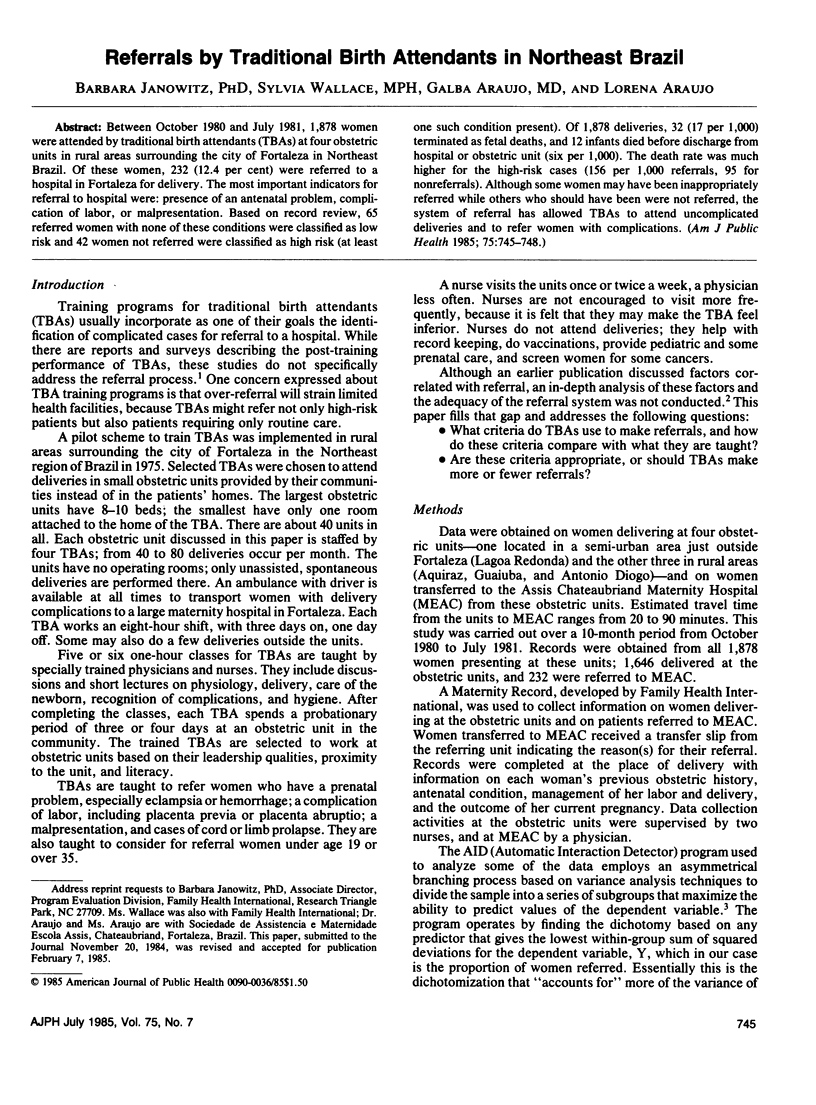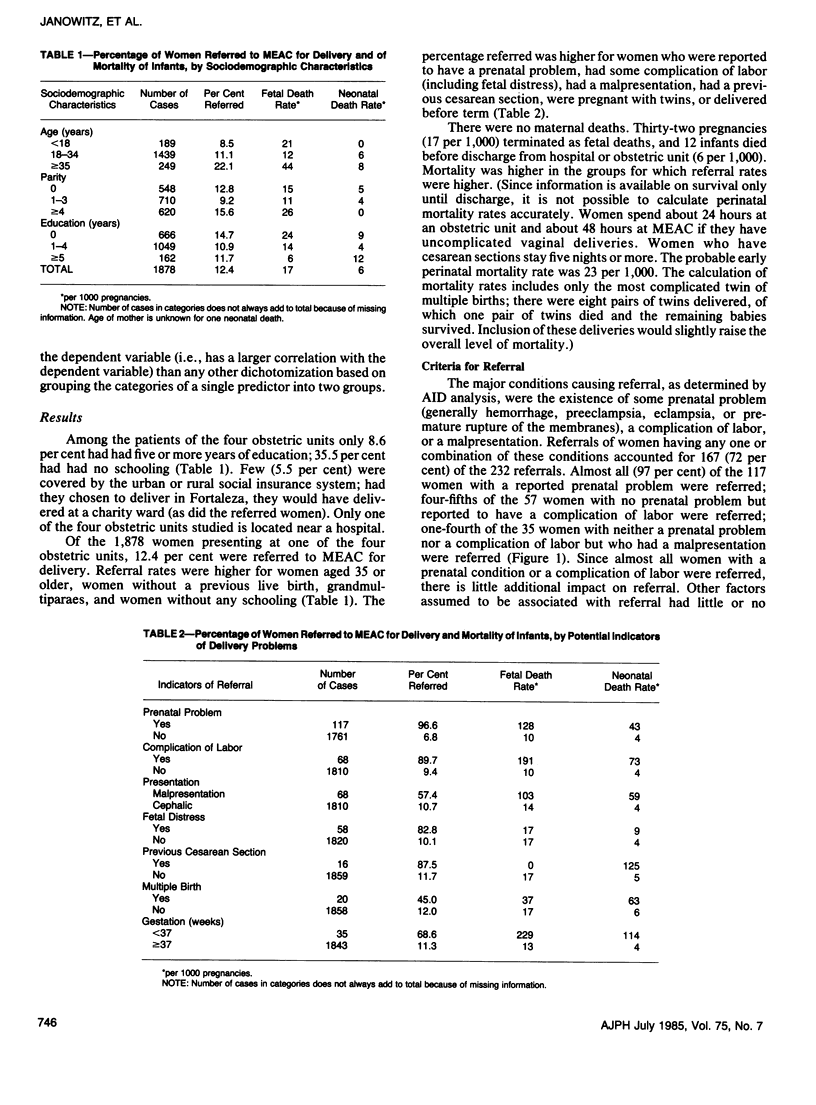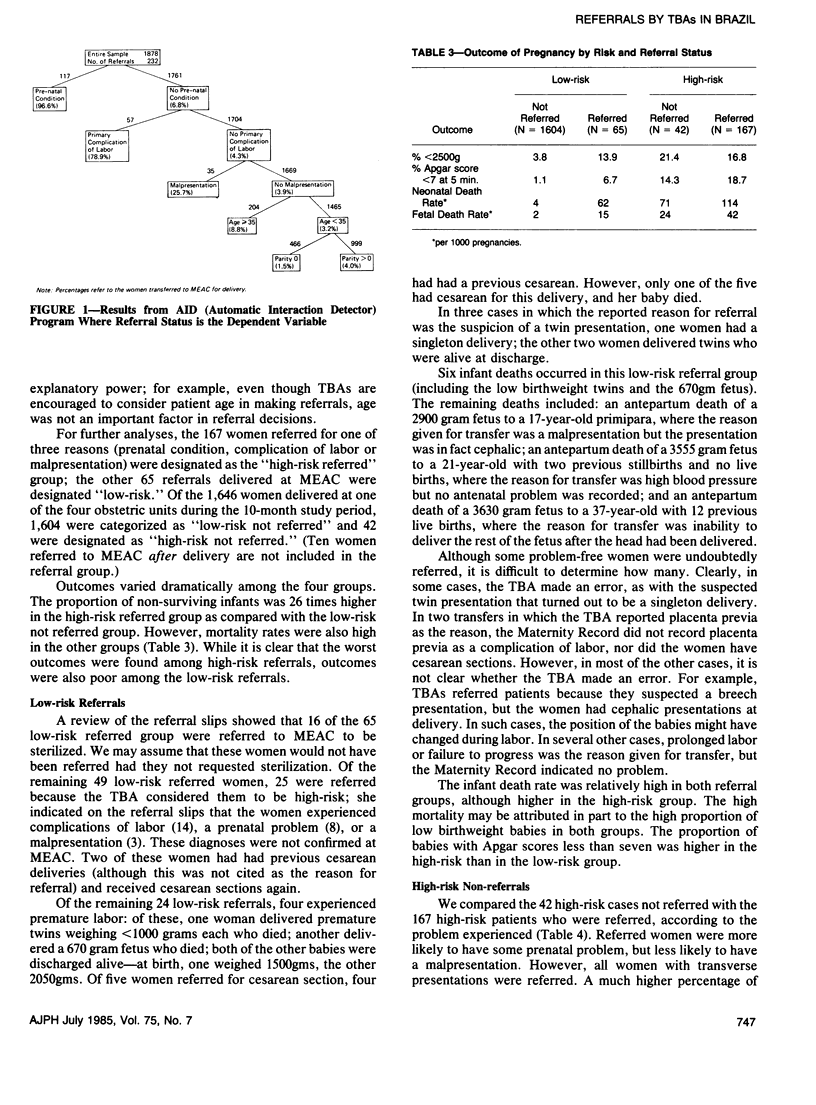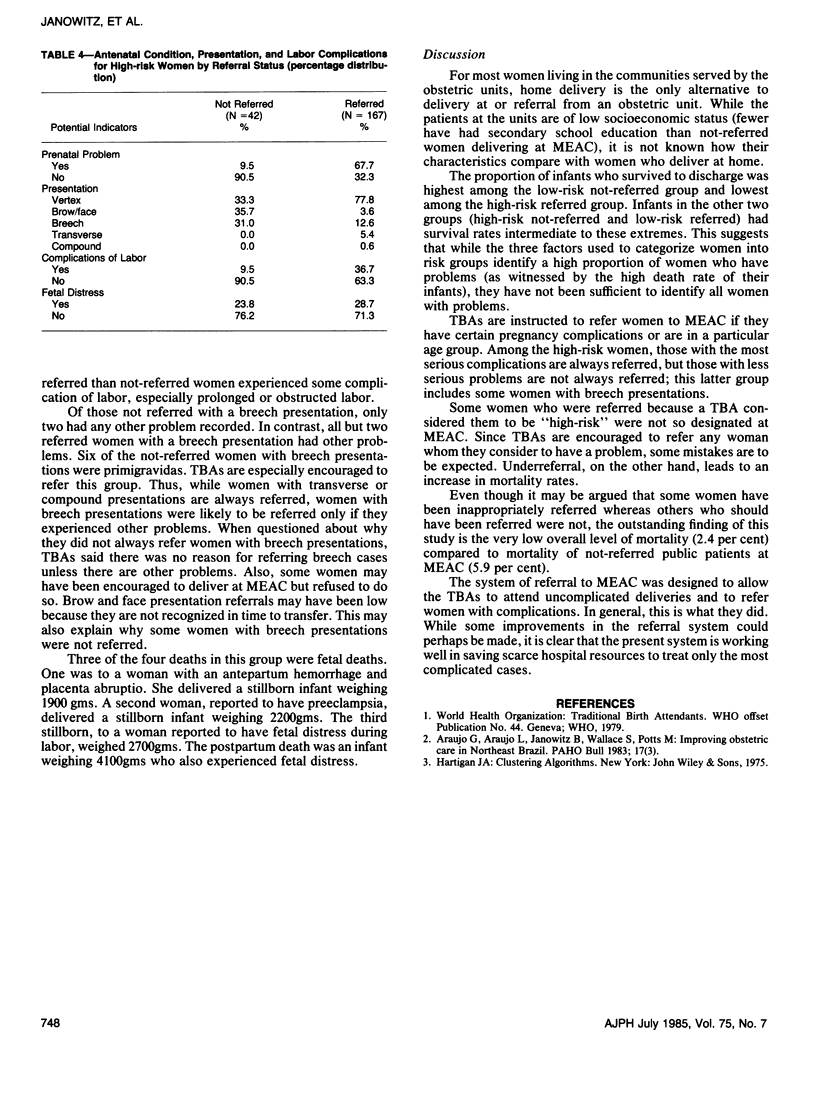Abstract
Between October 1980 and July 1981, 1,878 women were attended by traditional birth attendants (TBAs) at four obstetric units in rural areas surrounding the city of Fortaleza in Northeast Brazil. Of these women, 232 (12.4 per cent) were referred to a hospital in Fortaleza for delivery. The most important indicators for referral to hospital were: presence of an antenatal problem, complication of labor, or malpresentation. Based on record review, 65 referred women with none of these conditions were classified as low risk and 42 women not referred were classified as high risk (at least one such condition present). Of 1,878 deliveries, 32 (17 per 1,000) terminated as fetal deaths, and 12 infants died before discharge from hospital or obstetric unit (six per 1,000). The death rate was much higher for the high-risk cases (156 per 1,000 referrals, 95 for nonreferrals). Although some women may have been inappropriately referred while others who should have been were not referred, the system of referral has allowed TBAs to attend uncomplicated deliveries and to refer women with complications.
Full text
PDF





